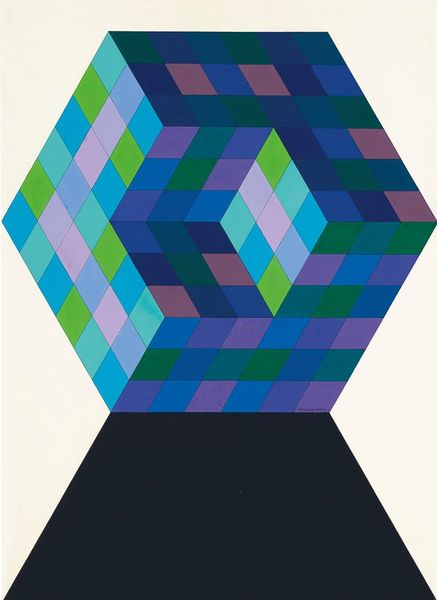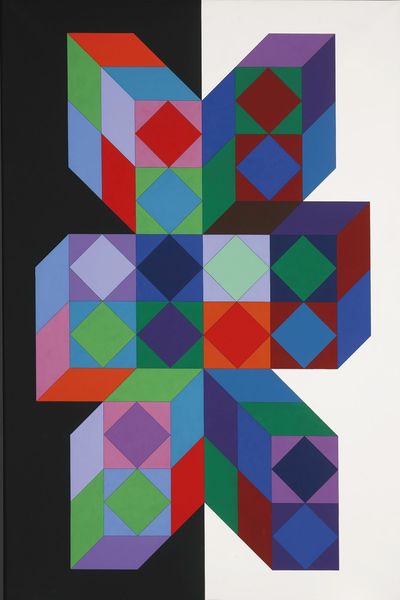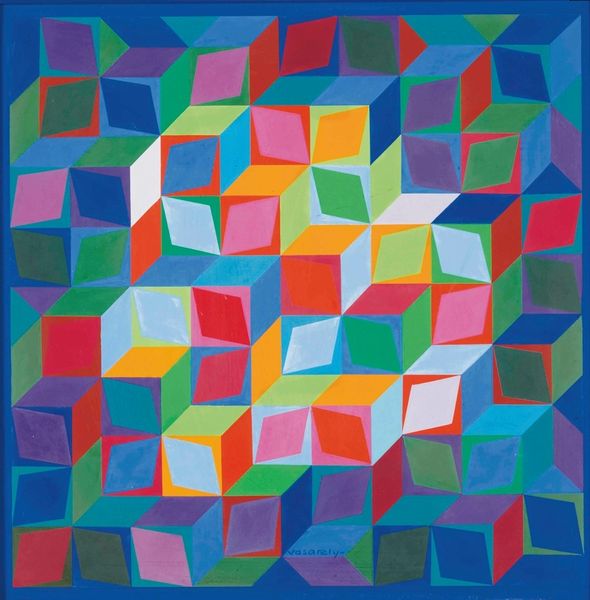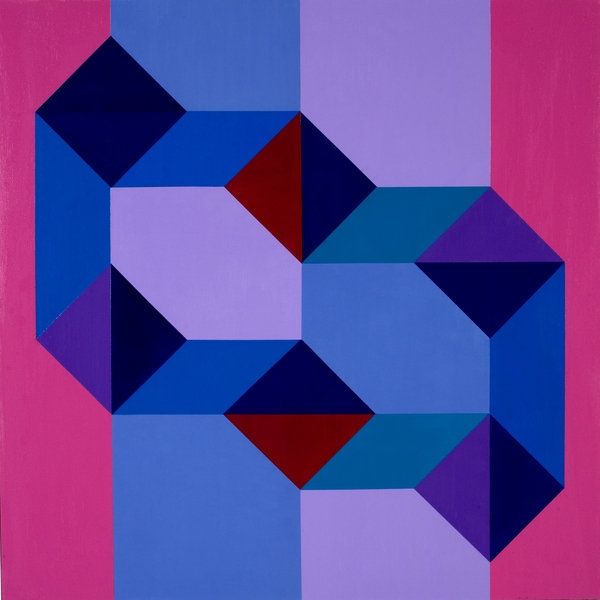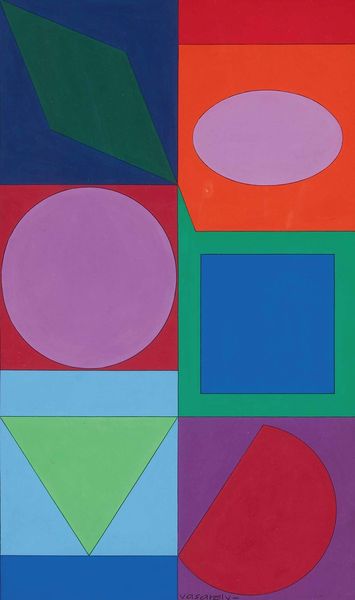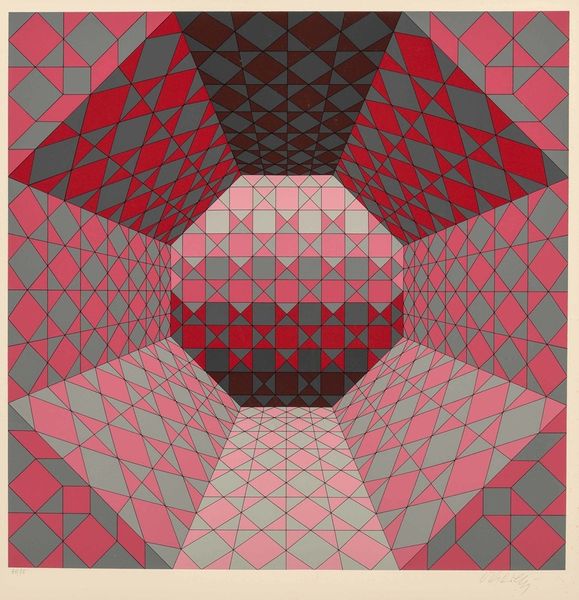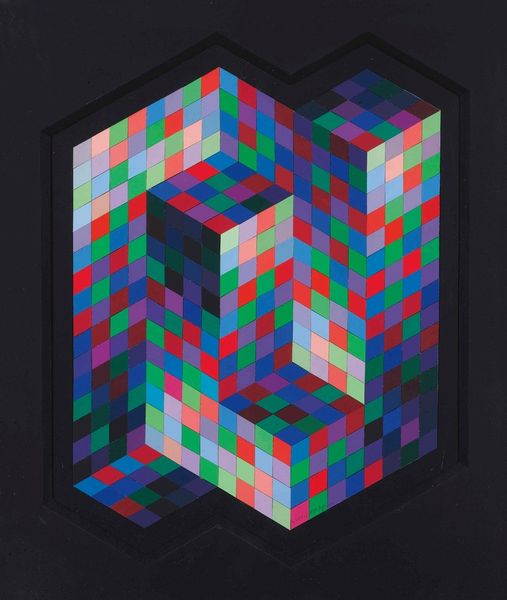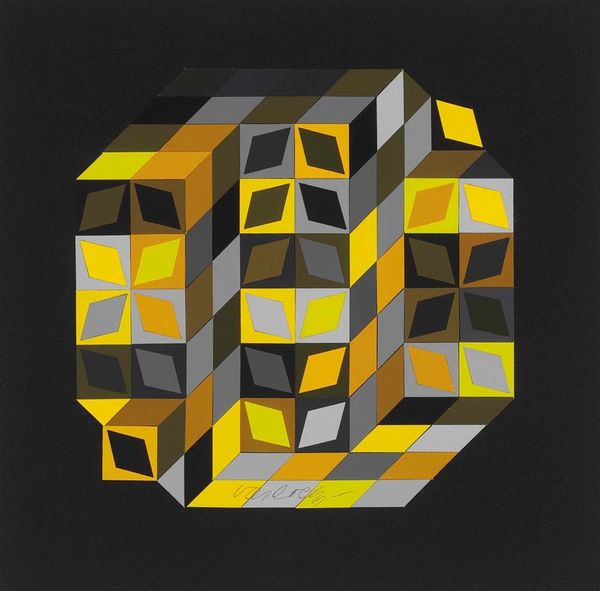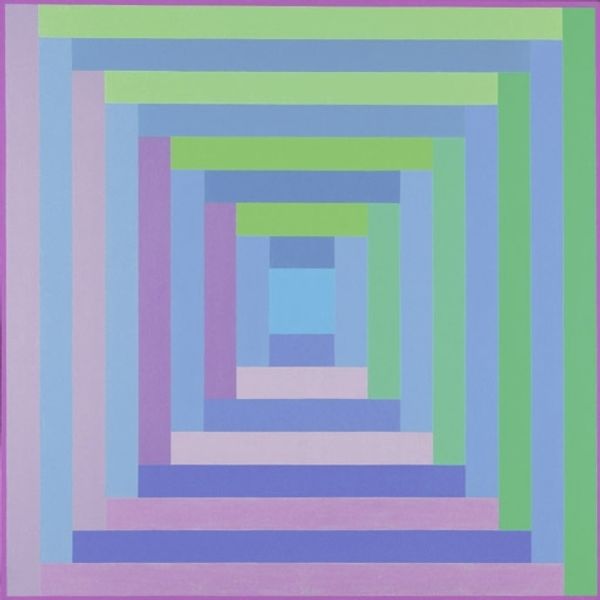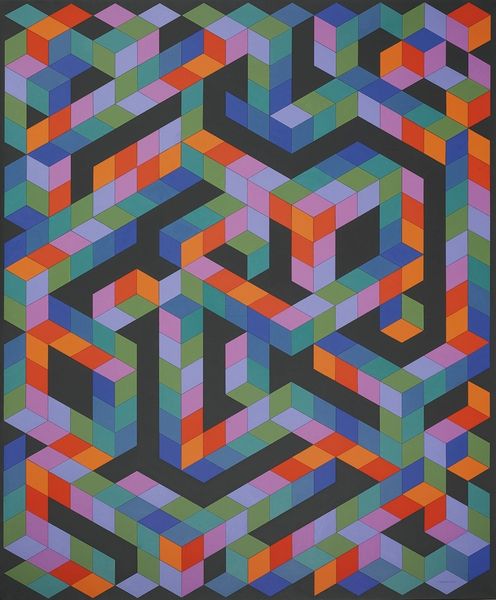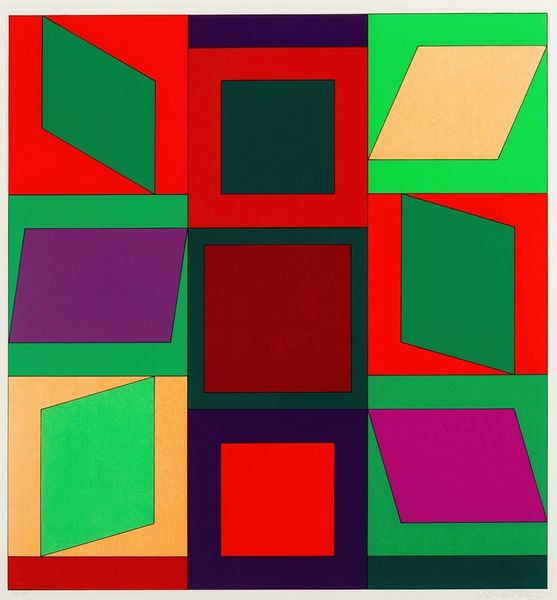
acrylic-paint
#
natural stone pattern
#
op-art
#
geometric composition
#
acrylic-paint
#
abstract
#
geometric pattern
#
subtle pattern
#
abstract pattern
#
minimal pattern
#
geometric
#
geometric-abstraction
#
repetition of pattern
#
vertical pattern
#
abstraction
#
pattern repetition
#
combined pattern
#
modernism
Copyright: Modern Artists: Artvee
Editor: Here we have Victor Vasarely's "TRIDIM-V," created in 1968 using acrylic paint. The geometric composition of blues, purples, and greens almost pulsates. It’s quite mesmerizing and makes you question your perception of depth. What do you see in this piece beyond the optical illusion? Curator: Well, viewed historically, Vasarely was actively trying to democratize art through serial production and reproducible imagery. Consider the socio-political climate of the 1960s—mass production, consumer culture, and the rise of technology. How does "TRIDIM-V," with its geometric abstraction and optical effects, reflect or engage with those societal shifts? Is this piece a celebration of industrialization, or perhaps a critique? Editor: I never considered that! I was so caught up in the visual effect. So the repeating pattern isn’t just about tricking the eye, it’s also connected to mass production? It sounds like he may be leveraging new mediums, like acrylic paint. Curator: Exactly! Vasarely saw the potential of these new mediums and repeatable forms to reach a wider audience, breaking away from traditional, exclusive art forms. These were ideas embraced through modernism at that time, where accessibility and engagement of society was seen as an ideal function of the arts. The gallery becomes more democratic. Do you think that a piece like this serves a social function today? Editor: I think so. It challenges our visual assumptions and encourages interaction. Maybe its accessibility, born from mass production techniques, ironically, allows for deeper engagement. Thank you; it gave me a broader perspective on the work. Curator: My pleasure. It is always helpful to situate these pieces into cultural setting to appreciate all they can convey.
Comments
No comments
Be the first to comment and join the conversation on the ultimate creative platform.

